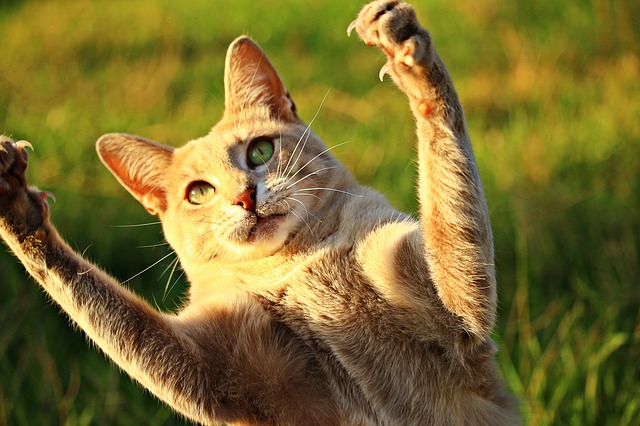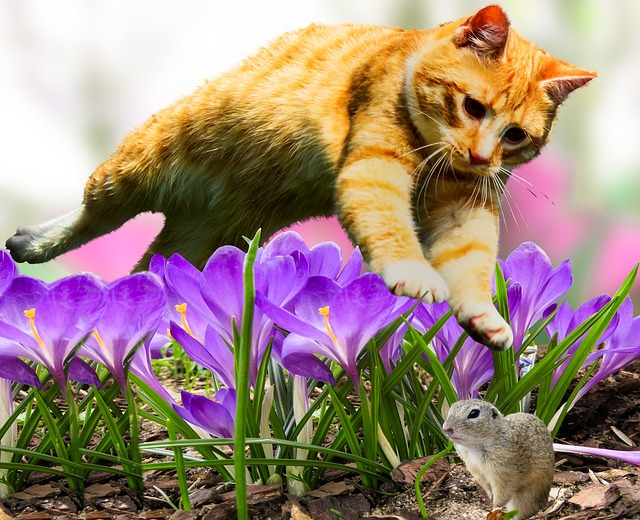Strong, independent, mysterious, calm, and collected… a cat is a great pet to have. He may be small but his personality is larger-than-life.
If you’ve watched your kitty hunt birds or rodents around the home, it must have been quite the show.
Their patience, alertness, amazing sense of smell, and ability to deliver a grip and kill the prey is just mind-blowing.
A cat’s claws remain to be among the most active parts of a cat. They do everything from helping the cat have a grip on trees when climbing to holding prey firmly to tearing it apart and even for grooming needs.
In this guide, we take a look at some of the most fascinating facts about cat claws anatomy.
The Structure

- Each of a cat’s front paws has five digits while the rear ones have four each. There are only a few cats that are known as polydactyl, meaning they have more toes on each paw. The shorter claws are located on the innermost part of the paw are called dewclaws and are responsible for gripping onto prey.
- Cat claws may look like human nails but they are not. In our case, the nail is flatter and lies on top of the fingertips and toes. Their main role is to protect our digits. For a cat, the claws protrude from the front of his toe and have a number of functions including holding onto prey, tearing flesh from bones, climbing, and defending his bearer.
- Ligaments and tendons control movements: ligaments connect bones while tendons connect muscles. An elastic ligament on a cat’s claws pulls the distal and middle phalanxes closer to each other to avoid the claw from touching the ground.
- The claws are made of keratin. The quick—a living tissue located at the middle of the claw—causes the claw tissue to grow in layers. The quick has nerve endings and blood vessels and supplies nutrients to the claws.
- A cat’s claw connects directly to the bone rather than the flesh as is the case with human beings. To keep the nail from ever growing again, you will have to trim the whole distal phalanx—an act called declawing. This is a very painful undertaking for your dog.
Functions

- The most important use of a cat’s claws is hunting. Cats are carnivorous meaning they are designed to eat meat. In the wild, they actually have to hunt to survive. The claws offer much-needed traction when running. Since a kitty walks on his toes, he can run faster than a human being and hence a higher likelihood of finding prey.
- The claws also play a huge role when catching prey. They are retracted to help grip the prey and tear it apart.
- Cats use their claws to climb trees and other surfaces. If you’ve ever watched your cat going up and down a wall or a piece of tall furniture, you must have noticed his claws coming out to help with traction.
- The ability to grip on stuff like rugs and clothes allows the kitty to stretch and twist his body. Not only does this makes for a great exercise routine but it also gives the cat plenty of entertainment when he’s bored.
- As cats scratch on stuff, the paws release a special scent. When other cats come around, they will instantly know that there’s another cat in the territory.
- Besides hunting, climbing, leaving scents, and stretching, claws are also utilized by cats for protection. When faced with danger, the claws come out ready to attack and self-defend the cat.
- The claws also help the cat remove unwanted stuff from her skin. These include ticks, dirt, fleas, and more. They also help him to scratch and get rid of an irritating itch.
Other Fascinating Facts about Cat Claws

- They can extend and retract. The digital and superficial flexor tendons control the movement of the claws. Then the tendons relax, the claw goes back inside the paw. Else, when tensed, the claw extends. The motion is similar to how we move our toes. To point the toes, all you do is flex the ankle back and vice versa. When a cat wants to use the claws, the cat will contract the tendons to extend it.
- While a cat has the ability to retract his claws, it has been shown that they don’t go all the way into the sheath. Instead, they stay above the ground when the paw is resting. They will then rest around the toes and in the fur. If you’ve ever looked at the claws of your kitty up close when he is resting, you must have noticed the claws protruding from the fur.
- The ability to retract claws helps them from not touching the ground when the kitty is walking, leaping, or running. This reduces the wear and tear on these important body parts and keeps them sharp. It also ensures that a cat can walk quietly and ultimately sneak up on unsuspecting prey.
- In addition to extending and retracting, a cat’s claws can curve at the ends. This is called curling and aids the cat in catching and grabbing prey. When they curl in a specific direction, the cat can climb up or down a tree in a forward or backward motion. Watching a cat shimmying backward down the scratching post or tree can be quite the entertainment. Unfortunately, the curling can be dangerous as it increases the chance of the claw getting stuck in stuff and getting injured in the process.
- Claws wear down. Although your cat’s claws never touch the ground, they come out when the feline creature is navigating difficult terrain like rocky or rough ground. They are used to offer the grip needed to move in such a landscape. Indoor cats don’t have a chance to use their claws in this way and have them be naturally trimmed. This means they need frequent trimming from their owners.
- Cats are digitigrade creatures meaning they walk on their toes. Humans walk on the balls of their legs as well as the heels. The ability to use their toes to make their steps gives them an added advantage of walking much faster and quieter ultimately catching prey much more efficiently. The claws play a key role in enhancing the walk, especially in rough areas.
Final Thoughts
There it is: 18 fascinating cat claws anatomy facts. Surprised? We bet you are.
We told you cats are quite mysterious and interesting creatures.
The next time your fur baby displays his climbing and hunting skills in front of you, you’ll know it has a lot to do with the anatomy of his nails.
Related Post:
20 Things You Didn’t Know About Cat Leg Anatomy
The ABCs of Cat Claws Shedding
Normal Cat Paw Vs Polydactyl—A Complete Guide To Your Kitty’s Paws

Hi! I am Eleanor Price. I started this website after my cat, Louie, almost died from a case of botulism (a type of food poisoning often caused by bacteria that grow on food items). Turned out that my cat’s diet was the problem. I have made it my duty to provide the best information and recommendations about everything cat lovers need to know about their felines’ health and wellbeing. My goal is to find the most informative content on anything feline-related and share it with fellow hardworking kitty lovers.

